#villain novels
Text


forgot to share my svsss doodles on here!! immediately just wanted to draw LBH first and foremost
#posted this on twitter and insta last yr lmao#svsss#mxtx svsss#scum villian self saving system#scum villains self saving system#luo binghe#shen qingqiu#ning yingying#ming fan#mxtx novels#my art
6K notes
·
View notes
Text

Just finished svsss - they’re so silly I love them all
#this novel was the funniest thing I ever had the pleasure of laughing at#scum villian self saving system#scum villain#scumbag system#luo binghe#shen qingqiu#bingqiu#shen yuan#svsss#svsss fanart#fanart#digital art#emi art#mxtx#mxtx fanart#danmei#liu qingge#liu mingyan#ming fan#ning yingying#Edit: Okay so the hanfu was folded into the wrong side:#it is fixed now but that was my bad! apologies
11K notes
·
View notes
Text
All MXTX novels are just about one outwardly put-together, inwardly screaming mess of a man and his emotional support war criminal.
#mxtx novels#mxtx#mxtx fandom#mxtx svsss#mxtx mdzs#mxtx tgcf#mdzs#mo dao zu shi#the grandmaster of demonic cultivation#the untamed#scum villian self saving system#scum villains self saving system#svsss#tgcf#heaven official's blessing#lan wangji#wei wuxian#wangxian#hua cheng#xie lian#hualian#luo binghe#shen qingqiu#bingqiu
6K notes
·
View notes
Text

Transmigrating sure is quite a hassle 💦
#svsss#svsss fanart#mxtx svsss#mxtx#mxtx novels#scum villain#shen qingqiu#shen yuan#digital art#illustration#digital illustration#my art#art#fanart#artists on tumblr#digital painting#this is mostly a study and also me trying to implement more stylization on my studies#i handwrote all of the system messages bc i really didnt want to figure out how to place the texts neatly
3K notes
·
View notes
Text
Cumplane where Airplane, in a fit of either bravery or insanity or positive or negative self-esteem (he's not totally sure) decides to cosplay as Luo Binghe and post the pictures online.
Of course, he doesn't do it as "Airplane Shooting Towards the Sky", he knows he has some questionable fans and doesn't really want to hand them a picture of his face. So he posts the images under one of the pseudonyms he uses for lurking around the comment section and social media tags. It's just a handful of images of him looking like the protagonist in his head, attempting to strike cool poses in a wig and some period clothes (he rented both).
The reception is... mixed. Airplane does not have abs, after all, nor a flawless complexion or much skill with makeup. He is fat, freckled, and awkward. The PIDW readership is not known for being particularly supportive either. In fact they're mostly a crab bucket of negativity and masculine posturing, so he gets a lot of mean-spirited commentary.
It's fine. Nothing he hadn't expected. Really solidifies for him that posting was a fit of madness, actually! What did he even expect? He's bracing himself for the worst when he sees that Peerless Cucumber, notorious hate-reader and defender of Luo Binghe's honor, has commented. Ah, shit. He's probably going to rip into Airplane for daring to sully his precious Binghe's reputation by dressing up like that, isn't he?
The comment is long, too. Fuck. Airplane's not sure if his self-esteem can take a comprehensive beating from the champion hater himself, but he's too curious not to look.
Shen Yuan, in the meanwhile, is just pleased that there has FINALLY been a Luo Binghe cosplayer who looks the part. Of course Luo Binghe wouldn't have exaggerated muscles, those are just a product of dehydration. Binghe spent most of his disciple years running around chopping wood and hauling laundry, and then later doing whatever he could to pack on the calories in order to make it through the Abyss. A hefty workman's build would only make sense for him, anything else would be nonsense. Airplane also described Luo Binghe as having a beautiful face, which Shen Yuan won't blame most cosplayers for not being able to just make happen, but a beautiful face doesn't mean "covered in so much makeup it looks like an anime character"! When would Luo Binghe have the time or inclination to put on makeup? A natural beauty with some inevitable blemishes would make more sense and be much more appealing, and this "Airplane Crashing to the Ground" (funny play on the author's name, Shen Yuan approves) has very pretty features! Everyone hating on this cosplay is just an idiot, the only actual problem is that his wig is poorly fitted.
So in true Peerless Cucumber fashion, he lays this all out.
This gets him embroiled in arguments with several other fans, who even accuse him of actually being the guy in the photos, claiming that there's no other reason why he would defend them. Shen Yuan doesn't care if people think that's him, because that's still the best Luo Binghe cosplay he's ever seen, but he doesn't want them doubting the sincerity of his arguments. So, he decides that the only reasonable thing to do is dress himself up in cosplay as well and then post the actual photos of himself.
While he'd like to dress up as one of Luo Binghe's allies like Mobei Jun, or maybe someone cool like Yue Qingyuan, he is too pedantic to think he could pull that off. Those guys are all strong warrior types, and Shen Yuan is a scrawny pale rich kid who looks like he'd probably lose a fight with a wet paper towel. The only characters he could plausibly pull off would be some of the more consumptive members of Binghe's harem and maybe, maybe, one of the weaker villains like Shen Qingqiu.
Shen Yuan is NOT posting pictures of himself crossplaying to the central nexus of toxic masculinity itself, so... Shen Qingqiu it is!
Poor Airplane has to go sit and stare at a while for a while. Peerless Cucumber likes his cosplay. Peerless Cucumber, ardent defender of Shang Qinghua's sellout crappy main character mary-sue, thinks Airplane is good-looking enough to cosplay as him. And said so. Repeatedly. And then posted borderline thirst-trap villain cosplay of himself, inadvertently revealing in the process that he is hot.
What the. What. What?!
Anyway, Shen Yuan suggests that they attend the next convention both cosplaying together because Airplane Shooting Towards the Sky is supposed to be doing a meet & greet at that one, and wouldn't it be fun to go as a pair? And Airplane agrees before his brain catches up and he realizes that might present a problem.
#cumplane#svsss#scum villain#scum villain's self saving system#airplane: surely I can pull off a deception as simple as not letting on that I'm the author of the novel?#airplane five seconds later: *accidentally drops some of the deep lore in response to one of shen yuan's tirades*#shen yuan: ??!!?? how could you know that???#airplane: shit shit shit I'm busted#shen yuan: could it be... that you're actually the real luo binghe? reverse transmigration???#airplane: ..........................................................................yes
2K notes
·
View notes
Text
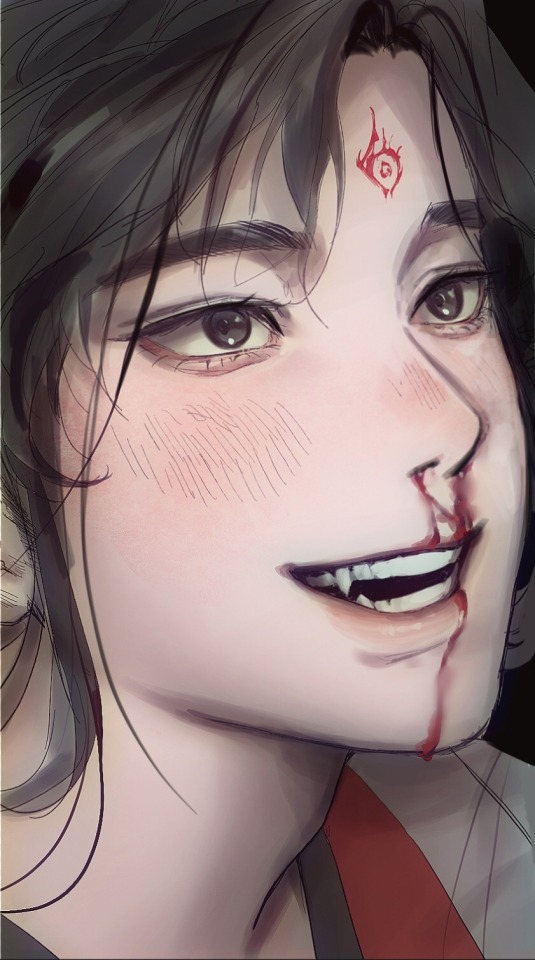

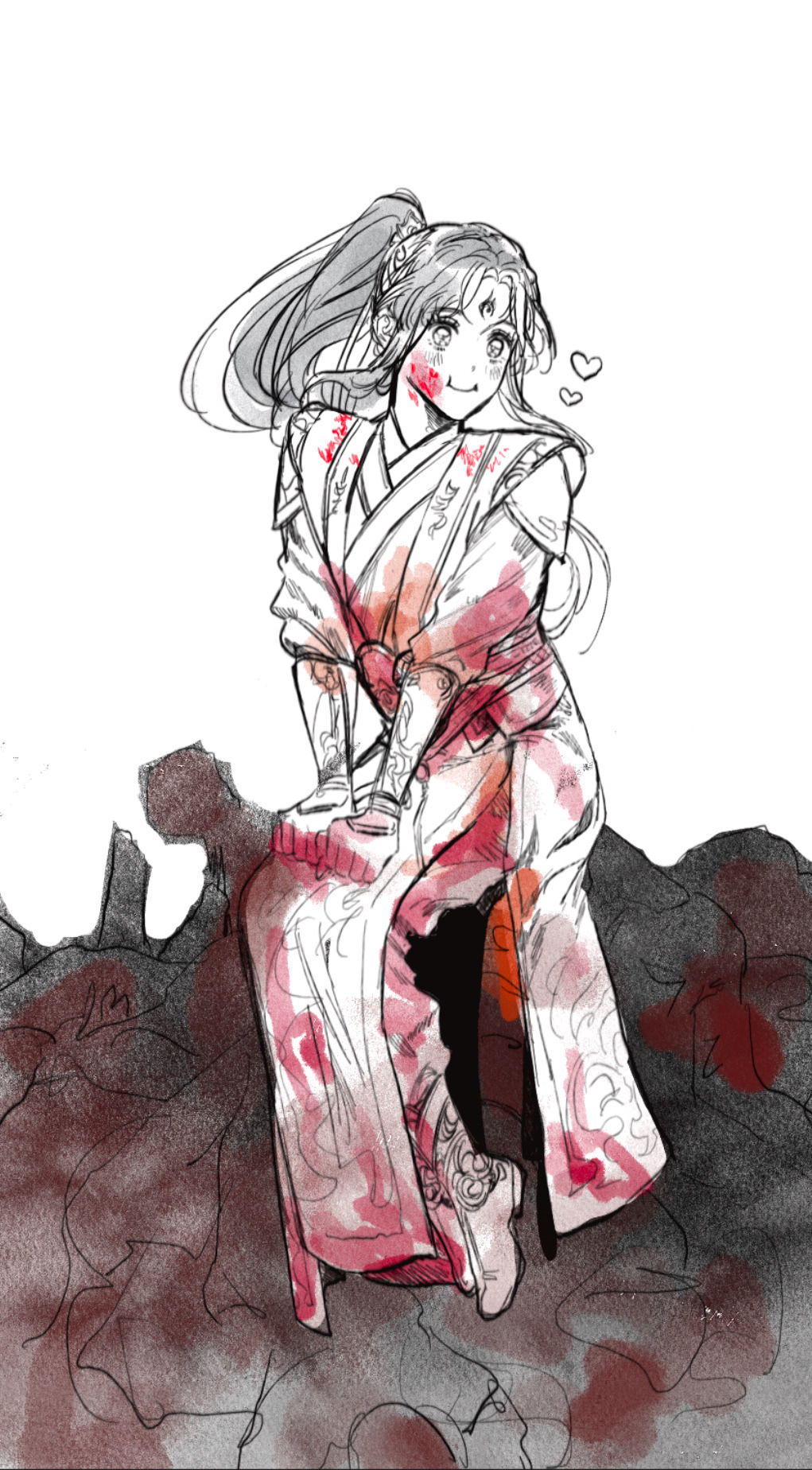
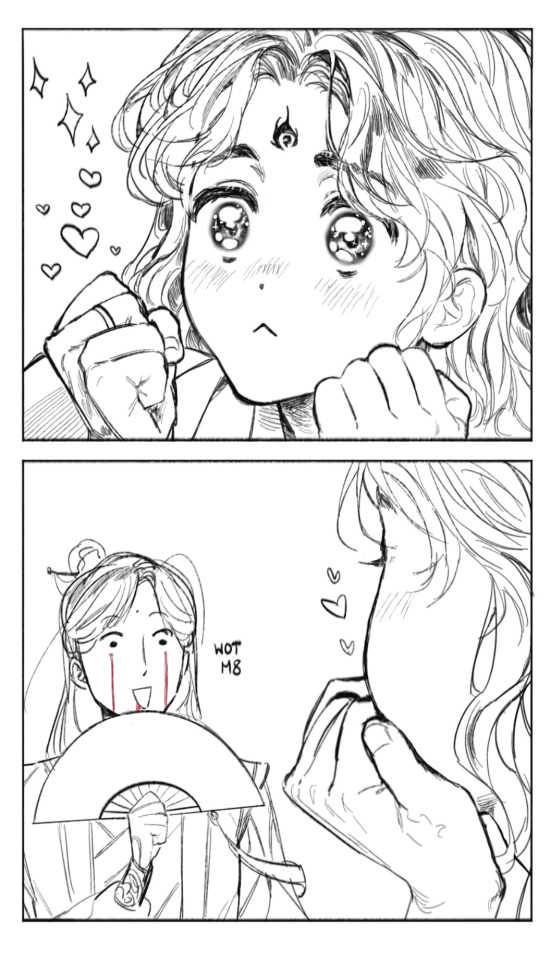



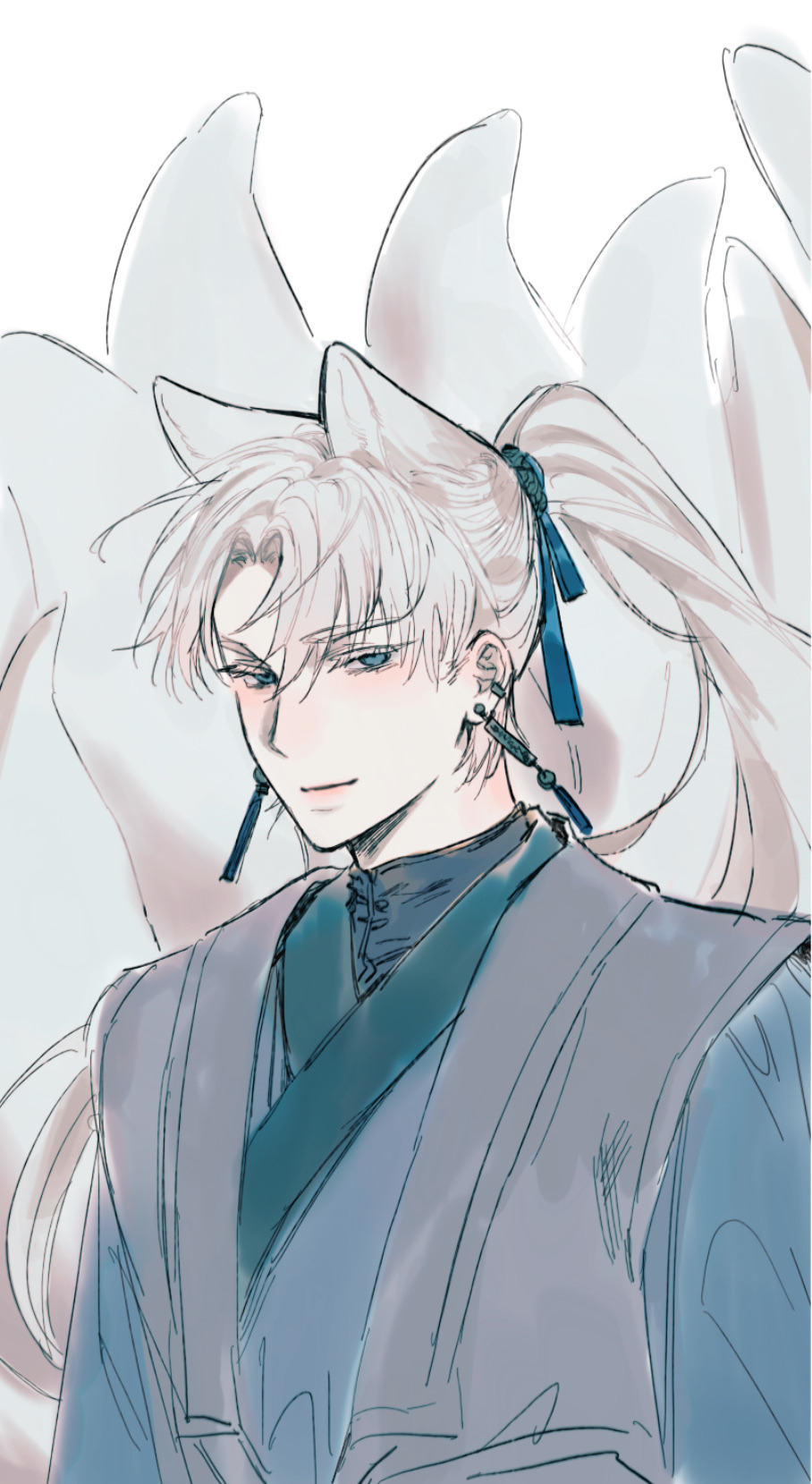

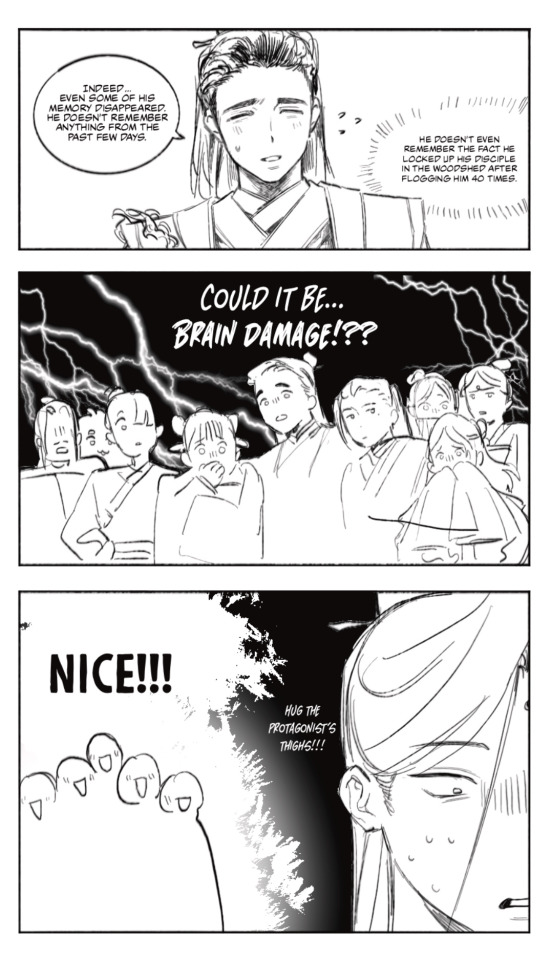
#tw: blood#mushyrt#svsss#scum villian self saving system#scum villain#binding the dragon for the empress#caught a dragon become my wife#I finished another novel if that’ll explain the random Fox guy!#it’s from the binding the dragon story and his name is Hu Le!!#I love him so much#BUT OMFG THIS NOVEL WAS SO PAINFUL#I’M NEVER READING IT AGAIN#IT’S LIKE READING ERHA BUT MOSTLY TORTURE 😭😭
2K notes
·
View notes
Text
I just think it’d be hilarious if Shen Yuan and Shang Qinghua were internet friends AND internet enemies. And of course, since neither wants their normal internet bestie to know about their unhinged behavior, i.e. Shang Qinghua writing a terrible porno for cash and Shen Yuan reading the thing in its entirety just to leave hate mail, they are completely unaware of the duality of their relationship. The amount of identity porn shenanigans of them both having a regular account where they have an absolutely normal friendship, and a side account for their deranged fandom content where they hate each other would be peak comedy.
#cumplane#shang qinghua#svsss shang qinghua#shen qingqiu#svsss shen qingqiu#svsss shen yuan#shen yuan#mxtx svsss#sqq svsss#svsss#svsss au#svsss fanfiction#svsss fic#svsss shitpost#svsss ideas#scum villain#scum villain self saving system#scum villain's self saving system#scum villans self saving system#scumbag self saving system#scumbag system#scumbag villain#mxtx fandom#mxtx novels#mxtx#mxtx characters#mxtx fanfic#mxtx hell#mo xiang tong xiu
2K notes
·
View notes
Text


Go Scum Villian Lovers. Feed.
#luo binghe#manga coloring#mxtx svsss#shen qingqiu#svsss#scum villian self saving system#scum villain#svsss shen qingqiu#svsss luo binghe#mxtx#mxtx novels#mxtx books
990 notes
·
View notes
Text

Bingge sketch
#artist on tumblr#digital artist#fanart#sketch#sketchbook#mxtx fanart#mxtx novels#danmei#sketchblr#mxtx svsss#svsss#luo binghe#luo bingge#svsss fanart#scum villain#mxtx fandom#mxtx#mxtx books#mo xiang tong xiu#ren zha fanpai zijiu xitong#doodle#drawing
880 notes
·
View notes
Text
Villains vs. Antagonists (Guide For Writers)
Hey there, fellow writers and wonderful members of the writeblr community! 📚✍️ It's Rin here and...
Today, we're diving into a topic that's close to many writers' hearts: villains and antagonists. These characters often steal the show, driving our plots forward and giving our heroes something to push against. But here's the thing – while these terms are often used interchangeably, they're not quite the same. So, let's unpack this, shall we?
First things first, let's break down the difference between a villain and an antagonist. It's a distinction that can really elevate your storytelling game!
An antagonist is simply a character (or force) that opposes your protagonist. They're the obstacle, the challenge, the thing standing in the way of your main character achieving their goal. Here's the kicker: an antagonist doesn't have to be evil. They could be a rival love interest, a stern parent, or even nature itself.
A villain, on the other hand, is a specific type of antagonist. They're the bad guy, the evildoer, the character with malicious intent. All villains are antagonists, but not all antagonists are villains. Mind-blowing, right?
Let's look at some examples to make this clearer:
In "Romeo and Juliet," the feuding families are antagonists, but they're not villains. They oppose the protagonists' desire to be together, but they're not evil.
In "Harry Potter," Voldemort is both an antagonist and a villain. He opposes Harry (making him an antagonist) and he's also evil (making him a villain).
In "Cast Away," the island and the challenges of survival are the antagonists. There's no villain in sight!
Now that we've got that sorted, let's dive deeper into how to create these characters and use them effectively in your writing.
Creating Antagonists:
Define their opposition: What specifically does your antagonist do to oppose your protagonist? This could be physical, emotional, or ideological opposition.
Give them a reason: Why are they standing in your protagonist's way? Even if it's not justified, there should be a reason that makes sense to the antagonist.
Make them strong: Your antagonist should be a worthy opponent. They need to pose a real challenge to your protagonist to keep things interesting.
Consider their perspective: Remember, your antagonist is the hero of their own story. Try writing a scene from their point of view to understand them better.
Create contrast: Your antagonist should in some way contrast with your protagonist. This could be in values, methods, or personality.
Creating Villains:
Establish their evil: What makes your villain "bad"? Is it their actions, their beliefs, or both?
Develop their backstory: How did they become evil? A compelling villain often has a tragic or twisted history.
Give them dimensions: Pure evil can be boring. Give your villain some complexity – maybe they love their cat or have a soft spot for classical music.
Create a strong motivation: What drives your villain? Greed? Revenge? A twisted sense of justice? The stronger and more relatable the motivation, the more compelling your villain will be.
Make them smart: Your villain should be clever enough to pose a real threat. They should be able to anticipate and counter your protagonist's moves.
Now, let's talk about how to use these characters in different genres. Because let's face it, a villain in a romance novel is going to look very different from one in a fantasy epic!
In Romance:
Antagonists in romance are often rivals for the affection of the love interest, or perhaps societal norms or family expectations standing in the way of true love. Villains are less common, but when they appear, they might be abusive exes or manipulative friends trying to sabotage the relationship.
Tip: In romance, make sure your antagonist's motivations are clear and relatable. We should understand why they're opposing the main relationship, even if we don't agree with their methods.
In Fantasy:
Fantasy is ripe for both antagonists and villains. You might have a Dark Lord seeking to conquer the world (classic villain) or a rival magic user competing for the same goal as your protagonist (antagonist).
Tip: In fantasy, world-building is key. Make sure your antagonist or villain fits logically into the world you've created. Their powers, motivations, and methods should all make sense within the rules of your fantasy realm.
In Mystery/Thriller:
In these genres, your antagonist is often the perpetrator of the crime your protagonist is trying to solve. They might not be evil (maybe they committed a crime of passion), or they could be a full-fledged villain if their crimes are particularly heinous.
Tip: In mysteries, your antagonist needs to be clever enough to challenge your detective protagonist. Leave subtle clues about their identity or motives, but make sure they're smart enough to almost get away with it.
In Literary Fiction:
Here, antagonists are often more abstract. They might be societal expectations, personal flaws, or even time itself. Villains in the traditional sense are less common, but morally grey characters who oppose the protagonist are frequent.
Tip: In literary fiction, focus on the nuances of your antagonist. They should be as complex and flawed as your protagonist, with their own rich inner life.
In Sci-Fi:
Science fiction offers a wide range of possibilities for antagonists and villains. You might have alien invaders, oppressive governments, or even well-meaning scientists whose creations have gone awry.
Tip: In sci-fi, make sure your antagonist or villain is consistent with the technological and social aspects of your imagined world. Their methods and motivations should make sense within the context of your sci-fi setting.
Now, let's dive into some tips to make your antagonists and villains the best they can be in your novel:
Make them believable: Whether you're writing a mustache-twirling villain or a morally grey antagonist, their actions and motivations should make sense within the context of your story and their character.
Give them a personal connection to the protagonist: The conflict becomes much more engaging when it's personal. Maybe your antagonist and protagonist used to be friends, or they're fighting over the same goal.
Show their impact: Don't just tell us your antagonist is a threat – show us the consequences of their actions. Let us see how they affect your protagonist and the world of your story.
Give them wins: Your antagonist or villain should have some successes along the way. If they're always failing, they won't seem like a credible threat.
Humanize them: Even if you're writing a truly evil villain, give them some humanizing traits. Maybe they have a pet they dote on, or a tragic backstory that explains (but doesn't excuse) their actions.
Make them adaptable: A good antagonist doesn't stick to one plan. When the protagonist foils them, they should be able to come up with new strategies.
Give them their own character arc: Your antagonist or villain should grow and change throughout the story, just like your protagonist does.
Use them to highlight your protagonist's strengths and weaknesses: Your antagonist should challenge your protagonist in ways that force them to grow and change.
Consider their presentation: How do other characters react to your antagonist? How do they present themselves to the world versus who they really are?
Don't forget about henchmen: If you're writing a villain, consider giving them some underlings. This can add depth to their character and provide more challenges for your protagonist.
Remember, whether you're crafting a dastardly villain or a complex antagonist, these characters are crucial to your story. They're the ones who push your protagonist to grow, who raise the stakes, and who often drive the plot forward.
But here's a gentle reminder: while it's important to make your antagonists and villains compelling, be mindful of the impact your writing might have. If you're dealing with heavy themes or traumatic events, handle them with care and sensitivity.
Now, I know we've covered a lot of ground here, and you might be feeling a bit overwhelmed. That's okay! Writing complex characters is a skill that develops over time. Don't be afraid to experiment, to try different approaches, and to revise and refine your antagonists and villains as you go.
One exercise I find helpful is to write a short story from your antagonist's or villain's point of view. This can help you understand their motivations better and ensure they feel like real, three-dimensional characters.
Another tip: watch movies or read books in your genre and pay special attention to how they handle antagonists and villains. What works well? What doesn't? How can you apply these lessons to your own writing?
Remember, there's no one "right" way to create these characters. What matters is that they serve your story and engage your readers. Trust your instincts, and don't be afraid to push boundaries or subvert expectations.
As you work on your antagonists and villains, keep in mind that they're not just there to make life difficult for your protagonist. They're an integral part of your story's ecosystem. They shape the plot, influence character development, and often reflect themes or ideas you're exploring in your work.
And remember, writing is a journey. Your first draft of an antagonist or villain might not be perfect, and that's okay. The beauty of writing is in the revision, in the gradual sculpting of characters until they leap off the page.
Lastly, don't forget to have fun with it! Creating antagonists and villains can be some of the most enjoyable parts of writing. Let your imagination run wild, explore the darker sides of human nature, and see where your characters take you.
I hope this deep dive into antagonists and villains has been helpful and inspiring. Remember, you've got this! Your unique voice and perspective will bring these characters to life in ways no one else can.
Happy writing! 📝💖 - Rin. T
Before you go, why not join us at The Write Right Society? We're a supportive Tumblr community where writers lift each other up. Whether you're a newbie or a pro, we'd love to have you! Share your work, get feedback, and connect with fellow wordsmiths, writers and aspiring authors.
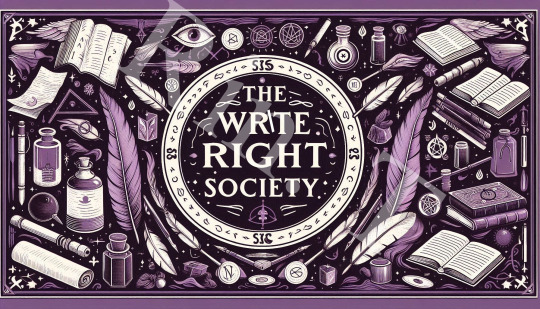
#writeblr#writing#writing tips#writers block#creative writing#on writing#writers and poets#how to write#writers on tumblr#thewriteadviceforwriters#amwriting#writingtips#writing tips and tricks#writing craft#antagonist#morally grey villain#tropes#characters#heroes and villains#writing advice#romance writing#writing a book#writing blog#novel writing#writing community#writing guide#writing ideas#writing inspiration#writing prompts#writing reference
655 notes
·
View notes
Text

The Arts and Crafts Peak, Peak Lord and demonic househusband!
#svsss#bingqiu#luo binghe#shen qingqiu#scum villain self saving system#scumbag system#my art#mxtx novels#mxtx#mxtx fanart#svsss fanart#bingqiu fanart
457 notes
·
View notes
Text


SQQ & SQH interactions are so funny and important to me
#felt bad i never got to draw SQH in my other doodles so i gave him this one meme specifically#scum villian self saving system#scum villains self saving system#svsss#svsss fanart#mxtx svsss#shen qingqiu#shang qinghua#mxtx fanart#mxtx novels#my art
5K notes
·
View notes
Text

Colored an svsss illustration :), the artist who drew this wonderful piece can be found on X, @/velinxi
#svsss novel#xí's posts#mxtx#danemi#the scum villain's self saving system#bingqiu#luobinghe#shen qingqiu#shen yuan#coloring
580 notes
·
View notes
Text
To Write Better Antagonists, Have Them Embody the Protagonist's Struggles
(Spoilers for The Devil Wears Prada, Avatar the Last Airbender, Kung Fu Panda 2, and The Hunger Games triology).
Writing antagonists and villains can be hard, especially if you don't know how to do so.
I think a lot of writers' first impulse is to start off with a placeholder antagonist, only to find that this character ends up falling flat. They finish their story only for readers to find the antagonist is not scary or threatening at all.
Often the default reaction to this is to focus on making the antagonist meaner, badder, or scarier in whatever way they can- or alternatively they introduce a Tragic Backstory to make them seem broken and sympathetic. Often, this ends up having the exact opposite effect. Instead of a compelling and genuinely terrifying villain, the writer ends up with a Big Bad Edge Lord who the reader just straight up does not care about, or actively rolls their eyes at (I'm looking at you, Marvel).
What makes an antagonist or villain intimidating is not the sheer power they hold, but the personal or existential threat they pose to the protagonist. Meaning, their strength as a character comes from how they tie into the themes of the story.
To show what I mean, here's four examples of the thematic roles an antagonist can serve:
1. A Dark Reflection of the Protagonist
The Devil Wears Prada
Miranda Priestly is initially presented as a terrible boss- which she is- but as the movie goes on, we get to see her in a new light. We see her as an bonafide expert in her field, and a professional woman who’s incredible at what she does. We even begin to see her personal struggles behind the scenes, where it’s clear her success has come at a huge personal cost. Her marriages fall apart, she spends every waking moment working, and because she’s a woman in the corporate world, people are constantly trying to tear her down.
The climax of the movie, and the moment that leaves the viewer most disturbed, does not feature Miranda abusing Andy worse than ever before, but praising her. Specifically, she praises her by saying “I see a great deal of myself in you.” Here, we realize that, like Miranda, Andy has put her job and her career before everything else that she cares about, and has been slowly sacrificing everything about herself just to keep it. While Andy's actions are still a far cry from Miranda's sadistic and abusive managerial style, it's similar enough to recognize that if she continues down her path, she will likely end up turning into Miranda.
In the movie's resolution, Andy does not defeat Miranda by impressing her or proving her wrong (she already did that around the half way mark). Instead, she rejects the values and ideals that her toxic workplace has been forcing on her, and chooses to leave it all behind.
2. An Obstacle to the Protagonist's Ideals
Avatar: The Last Airbender
Fire Lord Ozai is a Big Bad Baddie without much depth or redemptive qualities. Normally this makes for a bad antagonist (and it's probably the reason Ozai has very little screen time compared to his children), but in Avatar: The Last Airbender, it works.
Why?
Because his very existence is a threat to Aang's values of nonviolence and forgiveness.
Fire Lord Ozai cannot be reasoned with. He plans to conquer and burn down the world, and for most of the story, it seems that the only way to stop him is to kill him, which goes against everything Aang stands for. Whether or not Aang could beat the Fire Lord was never really in question, at least for any adults watching the show. The real tension of the final season came from whether Aang could defeat the Fire Lord without sacrificing the ideals he inherited from the nomads; i.e. whether he could fulfill the role of the Avatar while remaining true to himself and his culture.
In the end, he manages to find a way: he defeats the Fire Lord not by killing him, but by stripping him of his powers.
3. A Symbol of the Protagonist's Inner Struggle
Kung Fu Panda 2
Kung Fu Panda 2 is about Po's quest for inner peace, and the villain, Lord Shen, symbolizes everything that's standing in his way.
Po and Lord Shen have very different stories that share one thing in common: they both cannot let go of the past. Lord Shen is obsessed with proving his parents wrong and getting vengeance by conquering all of China. Po is struggling to come to terms with the fact that he is adopted and is desperate to figure out who he is and why he ended up left in a box of radishes as a baby.
Lord Shen symbolizes Po's inner struggle in two main ways: one, he was the source of the tragedy that separated him from his parents, and two, he reinforces Po's negative assumptions about himself. When Po realizes that Lord Shen knows about his past and confronts him, Lord Shen immediately tells Po exactly what he's afraid of hearing: that his parents abandoned him because they didn't love him. Po and the Furious Five struggle to beat Shen not because he's powerful, but because Po can't let go of the past, and this causes him to repeatedly freeze up in battle, which Shen uses to his advantage.
Po overcomes Shen when he does the one thing Shen is incapable of: he lets go of the past and finds inner peace. Po comes to terms with his tragic past and recognizes that it does not define him, while Shen holds on to his obsession of defying his fate, which ultimately leads to his downfall.
4. A Representative of a Harsh Reality or a Bigger System
The Hunger Games
We don't really see President Snow do all that much on his own. Most of the direct conflict that Katniss faces is not against him, but against his underlings and the larger Capitol government. The few interactions we see between her and President Snow are mainly the two of them talking, and this is where we see the kind of threat he poses.
President Snow never lies to Katniss, not even once, and this is the true genius behind his character. He doesn't have to lie to or deceive Katniss, because the truth is enough to keep her complicit.
Katniss knows that fighting Snow and the Capital will lead to total war and destruction- the kind where there are survivors, but no winners. Snow tells her to imagine thousands upon thousands of her people dead, and that's exactly what happens. The entirety of District 12 gets bombed to ashes, Peeta gets brainwashed and turned into a human weapon, and her sister Prim, the very person she set out to protect at the beginning of the story, dies just before the Capitol's surrender. The districts won, but at a devastating cost.
Even after President Snow is captured and put up for execution, he continues to hurt Katniss by telling her the truth. He tells her that the bombs that killed her sister Prim were not sent by him, but by the people on her side. He brings to her attention that the rebellion she's been fighting for might just implement a regime just as oppressive and brutal as the one they overthrew and he's right.
In the end, Katniss is not the one to kill President Snow. She passes up her one chance to kill him to take down President Coin instead.
#writing#creative writing#novel writing#writer problems#writers of tumblr#writers on tumblr#writing advice#writing community#writing problems#fantasy writing#on writing#writer#writerscommunity#fantasy writer#writing a book#writing about writing#writing characters#writing villains#writing antagonists#long post
3K notes
·
View notes
Text
okay so since nobody else jumped to make this, here we go
(there's a 'see results' option for those who did read svsss at the end of the poll btw!)
(also i ask humbly to reblog if this poll caught your fancy. because most of my followers are from danmei fandoms and likely have read svsss)
#svsss#scum villain's self saving system#scum villain's self-saving system#bingqiu#moshang#luo binghe#shen qingqiu#tumblr polls#polls#mxtx#danmei novels#cnovels
4K notes
·
View notes
Text
What if the plant body hadn't worked out, and the Holy Mausoleum solution had actually taken a long time to sort of "fix" Shen Qingqiu's body and fully call his soul back to it, so that hundreds of years passed and civilization in PIDW/SV world progressed to the point of something like the "modern era"?
Imagine Luo Binghe trying to delicately introduce his shizun to such strange concepts as smart phones and credit cards, while Shen Qingqiu is just desperately trying to figure out how dumb he should play this. Would it be believable for him to get everything on the first try? There have to be some differences between what he knows and this world's versions, right, because of the demons and cultivators and things? Right?? But it's not like any of this actually IS difficult for him to grasp!
Luo Binghe: Shizun already discerned how to type using a keyboard...?
Shen Qingqiu, sweating bullets: what, like it's hard?
#bingqiu#svsss#scum villain's self saving system#scum villain#shen qingqiu desperately looking up pidw on binghe's phone#that novel doesn't exist thank goodness#though there are a LOT of historical novels and scholarly articles featuring his name and luo binghe's#maybe that stands to reason but why is it all... like that...?#he finds a particularly trashy modern retelling and can't put it down despite the number of upsetting things in it#so he just rips it apart in the comments section#airplane: cucumber bro??? you're finally back from the dead???#shen qingqiu: YOU!!!! I'm going to rip out your spine and beat you to death with it!#airplane: aww I missed you too#everyone else in the comments: 👀
2K notes
·
View notes